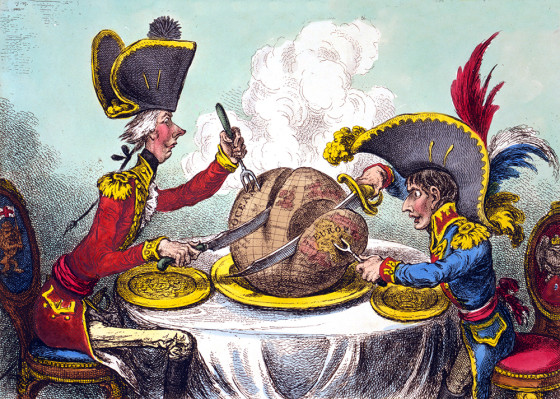
“Of course I did what I could for others too but it’s not worth talking about!”
By Nigel Atter
WILLIAM BUCKINGHAM enlisted in the British army three months before his 16th birthday. He attested on Nov. 29, 1901.
It is interesting that Buckingham had a rather troubled early life. Deserted by his father and with his mother in the workhouse he and his brother received a sound education at Countesthorpe Cottage Homes. From these humble beginnings he would go on to be received at Buckingham Palace by HM King George V.
The former tailor’s boy served with the Leicestershire regiment variously in Egypt, Guernsey and India. At the outbreak of the Great War, his outfit, the 2nd Leicesters, was stationed at Ranikhet, northern India. They were to become part of the Indian Corps under the command of Lieutenant-General Sir James Willcocks.
In the spring of 1915, the 2nd Leicesters were earmarked to take part in the Battle of Neuve Chapelle. This was the British Army’s first independent action of the war. It was a resounding success. The village was captured and the mass reserves that the Germans brought up for the counterattack were repulsed.

Private Buckingham, of A Company, 2nd Leicesters, would be awarded the Victoria Cross during the offensive “for conspicuous acts of bravery and devotion to duty in rescuing and rendering aid to the wounded whilst exposed to heavy fire, especially at Neuve Chapelle, on March 10 and 12, 1915.”[1]
During the battle, he rescued two injured comrades: one Corporal Tarry, and a Private Lane.
Tarry described the events to a Leicester journalist:
On March 12 we were getting ready for a German counter-attack, and I and four others were formed into a reconnoitring party and sent to examine a disused trench, which, if the Germans could have got, would have been a Godsend to them… I was shot in the right thigh by a bullet and knocked out. About five minutes afterwards Pte. Buckingham came across, and with the help of an officer, Lieut. Bayfield, I was carried about 60 yards to safety. You can tell how heavy the fire was because the stretcher-bearers were ordered not to go up.
“I can tell you,” added Corporal Tarry, “I have a very high opinion of Buckingham. He is a man who knows no fear. I myself saw him look after seven wounded, two or three on one day. He had a very dangerous job carrying orders from one company to another, and we all noticed his bravery. It did not matter who the wounded were, he would fetch them in. He was never afraid of going anywhere, and I can give him the highest praise.”.[2]

But what is perhaps less well-known is Buckingham’s attempt to rescue a German soldier. He would later describe the details in his own words:
During the battle, I came across a badly wounded German soldier. One of his legs had been blown off. He was lying right in the fire-zone and I heard his piteous appeal for help. Well, I rendered first aid as well as I could and just carried him to a place of safety. Of course, I did what I could for others too but it’s not worth talking about![3]
Buckingham was himself shot in the chest on March 13 during a German counterattack. He recalled:
It was a near thing. It would have been all over but for a packet of postcards in my left breast pocket. The bullet passed through the cards and entered my chest on the left side. It was, however, deflected and came out on the right side, when it was again deflected by my cartridge case and lodged in my right arm just above the elbow. There I carried it till got to the South Manchester Hospital.[4]
The historian Gordon Corrigan has asserted that Buckingham was killed at Neuve Chapelle; this is incorrect. Buckingham was awarded the VC by King George V personally at Buckingham Palace on Friday 4 June 1915. In fact, there is a very overexposed photograph of Buckingham standing outside the gates of the palace in the record office at Wigston. When he returned to active service it was as a batman for an officer of the 1st Leicesters. Sadly, he was killed in action at the Somme battles on Sept. 15, 1916. He is remembered on the Thiepval Memorial.
 ABOUT THE AUTHOR: Nigel Atter is the author of the new book With Valour and Distinction the Actions of the 2nd Battalion Leicestershire Regiment 1914-1918 from Helion & Co (click on the image to buy). He is an independent scholar of the First World War His previous book was In the Shadow of Bois Hugo The 8th Lincolns at the Battle of Loos.
ABOUT THE AUTHOR: Nigel Atter is the author of the new book With Valour and Distinction the Actions of the 2nd Battalion Leicestershire Regiment 1914-1918 from Helion & Co (click on the image to buy). He is an independent scholar of the First World War His previous book was In the Shadow of Bois Hugo The 8th Lincolns at the Battle of Loos.
[1] London Gazette, 28 April 1915.
[2] Illustrated Leicester Chronicle, 7 August 1915.
[3] Quoted in Derek Seaton’s, A Tiger and A Fusilier Leicesters’ VC Heroes. (Leicester, Norwood Press, 2001).
[4] Leicester Daily Mercury, 28 April 1915.









